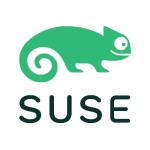What is our primary use case?
We utilize Git as a hosting platform for our SaaS offering. Our focus lies in the financial services sector, encompassing lending and credit-related functionalities. AKS serves as the foundation for our operations, enabling us to host a broader platform that includes medical services and more. Typically, we construct a Kubernetes-based platform to facilitate access for our CyberArk teams, who deploy a wide range of services. Presently, our production environment comprises financial services, along with upcoming releases such as medical services and HR solutions. Our objective is to migrate our products, along with relevant knowledge, from traditional servers and application services to more advanced PaaS offerings. This serves as our primary use case.
How has it helped my organization?
The solution has benefited our company because we can scale to our needs.
What is most valuable?
The most valuable features of AKS are the full array of capabilities and robust security.
What needs improvement?
AKS has the potential to enhance pricing by enabling us to explore ways to increase cost transparency. However, it's important to note that this refers to computation costs rather than client costs. Our objective is to optimize efficiency and minimize unnecessary expenses. Therefore, we aim to identify which services within the platform can benefit from improved consumption patterns. This is the focus of our ongoing research, with the goal of maximizing computational power within the cluster. We aim to avoid situations where resources are reserved but not utilized effectively. Additionally, our strong emphasis on security ensures that we adhere to all relevant compliance standards, bolstering our overall trustworthiness.
While AKS itself may not require specific improvements, we are exploring various avenues for enhancing our overall architecture. For instance, we are considering the adoption of OpenShift due to its superior security enforcement capabilities. Although it is possible to address security concerns within AKS, we have found that OpenShift offers more robust solutions in this regard. We are actively researching and evaluating other options, such as Microsoft's offerings, to identify the best fit for our architectural requirements. Our focus lies on driving architectural improvements rather than solely relying on AKS to address these concerns.
For how long have I used the solution?
I have been using Azure Kubernetes Service (AKS) for approximately four years.
What do I think about the stability of the solution?
Throughout the cluster update process, we experienced a few expected glitches, including networking outages and region-specific disruptions. However, we were able to effectively handle and resolve each of these issues. It is important to acknowledge that such challenges are inherent to the system and are accounted for within our Service Level Agreement (SLA). We have developed strategies to mitigate and manage these glitches, ensuring that they do not significantly impact the overall performance and reliability of our services.
What do I think about the scalability of the solution?
We use the solution on a constant basis.
The solution we offer is highly scalable, adapting to varying needs. Its scalability is designed to align with the limits and preferences you set, ensuring financial safety and control. The solution automatically scales up and down based on workload demands, effectively managing resources. It incorporates robust insights tools that continuously analyze the system's performance and determine optimal scaling actions. In certain cases, manual scaling may be preferred based on your own assessment, and the solution accommodates both automatic and manual scaling modes. The choice of scaling approach depends on the specific Service Level Agreement in place, allowing for flexibility and customization.
I rate the scalability of AKS an eight out of ten.
How are customer service and support?
Overall the support from AKS could be better.
Support is available in various forms to address different types of issues. There is a general support option accessible to everyone, allowing for access based on the criticality of the problem and its impact on your business. While premium support is also provided, there are instances where the evaluation of a technical issue begins with basic questions, even for subscribers. This can lead to frustration as it may require spending additional time repeatedly describing the situation. Consequently, it would be beneficial for the support process to be more agile. When an issue occurs with AKS or within a specific region, it affects the entire application. Unless you have multiple clusters in different regions for high availability, relying on a single cluster is often the norm. In such cases, paying double just to account for potential regional crashes may not be feasible or desirable. Therefore, it would be preferable to include such considerations in the SLA or contractual agreement. This issue is not unique to AKS and can be observed with other cloud providers as well. The general support process involves engaging with people, and despite automation, different levels of experience and knowledge can influence the support experience. Consequently, it may take one to two hours to synchronize and connect with someone who can provide the necessary assistance.
I rate the support from AKS a six out of ten.
How would you rate customer service and support?
Which solution did I use previously and why did I switch?
I have experience using various similar solutions to AKS, and I have observed that issues and their effects are generally comparable across different cloud providers. The overall quality of service is similar. However, when comparing AKS to on-premise solutions, the managed service aspect is a significant advantage. With AKS, we don't need to handle cluster management, head management, or master nodes. Additionally, we benefit from pre-configured networking and disk setups, providing a fully functional production-ready solution with ease. On the other hand, with on-premise deployments, more effort and expertise are required, making it a costlier option. However, having an on-premise solution allows for greater customization and control, including the ability to choose specific operating systems that align with customers' IT policies or security requirements. This can be cumbersome when using a managed service, as we lack control over these aspects. In certain cases, we have deployed on-premise solutions to address specific needs, particularly in private SaaS setups. However, for the SaaS itself, we primarily rely on the SaaS offering from Azure or other cloud providers. Comparing the costs, on-premise solutions tend to be more expensive due to the additional management requirements. It's important to note that managing on-premise solutions often requires senior resources, and it's not feasible to rely on junior team members. This factor, along with the need to hire and maintain such resources, should be considered. For example, using the cloud may result in a reduced need for DevOps resources by around thirty percent compared to on-premise solutions.
How was the initial setup?
The initial setup process is straightforward, requiring just a few mouse clicks. It is automated through the use of ARC, our automation tool. We utilize a configuration file that is triggered automatically by our CI/CD pipeline. When we need to create a cluster for a specific purpose, we initiate the process, and within a few minutes of the cluster being up and running, the site begins its deployment.
The deployment can be done in approximately five minutes, but it depends don't the resources available.
I rate the initial setup of AKS a nine out of ten.
What about the implementation team?
We do the implementation of the solution.
What was our ROI?
We have received a return on investment, of approximately 80 percent.
What's my experience with pricing, setup cost, and licensing?
The pricing of the solution is dependent on the choice of virtual machines, specifically the amount of memory required. There are various options available, ranging from around twenty-five to even more choices to select from. This flexibility allows you to customize the pricing based on your specific needs. From my perspective, virtual machines in the cloud tend to be slightly more expensive compared to virtual machines offered directly by data centers. However, this cost is offset by the benefits of a managed service. Taking the overall picture into account, the managed service approach is advantageous. The pricing for the platform can vary, typically ranging from three hundred euros per month to two thousand euros per month, depending on the specific requirements and setup you choose.
You have the flexibility to choose different payment options based on your needs. You can opt for a pay-as-you-go model, where you pay for resources on a monthly basis. Alternatively, you have the option to make upfront payments for one year or three years. Choosing the three-year payment option can provide you with up to a forty percent discount. The payment plan you select depends on the projected duration of your usage. If you are confident that you will require the service for a longer period, opting for the discounted upfront payment can be a cost-effective choice. The configurable nature of the payment options allows you to align your budget and experience in utilizing these services effectively.
Which other solutions did I evaluate?
I have evaluated many solutions.
What other advice do I have?
The usage of the platform is generally straightforward and easy to understand. However, it is advisable to remain vigilant when it comes to pricing, particularly if you have enabled automatic elasticity. While you can set up budget limits and other controls, it is important to be aware that once you start utilizing cloud services, you may increasingly realize the power and benefits they offer, leading to a growing need for additional services. Additionally, it is recommended to exercise caution when using Synapse, a specific component of the platform.
I rate AKS an eight out of ten.
Which deployment model are you using for this solution?
Public Cloud
Disclosure: My company does not have a business relationship with this vendor other than being a customer.




















